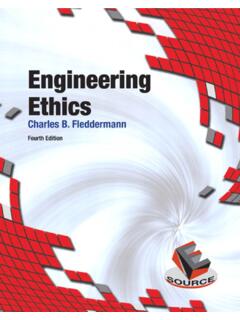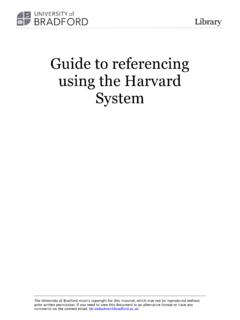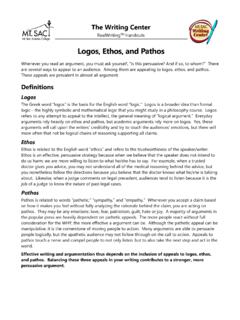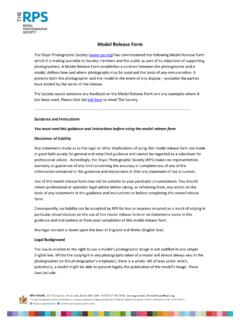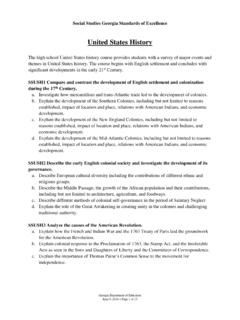Transcription of The Craft of Research - Shandong University
1 The Craft of ResearchOn Writing, Editing, and Publishingjacques barzunTelling About Societyhoward s. beckerTricks of the Tradehoward s. beckerWriting for Social Scientistshoward s. beckerPermissions, A Survival Guide: Blunt Talk about Art as Intellectual Propertysusan m. bielsteinThe Craft of Translationjohn biguenet and rainer schulte, editorsThe Craft of Researchwayne c. booth, gregory g. colomb, and joseph m. williamsGlossary of Typesetting Termsrichard eckersley, richard angstadt, charles m. ellerston, richard hendel, naomi b. pascal, and anita walker scottWriting Ethnographic Fieldnotesrobert m. emerson, rachel i. fretz, and linda l. shawLegal Writing in Plain Englishbryan a. garnerFrom Dissertation to Bookwilliam germanoGetting It Publishedwilliam germanoA Poet s Guide to Poetrymary kinzieThe Chicago Guide to Collaborative Ethnographyluke eric lassiterHow to Write a BA Thesischarles lipsonCite Rightcharles lipsonThe Chicago Guide to Writing about Multivariate Analysisjane e.
2 MillerThe Chicago Guide to Writing about Numbersjane e. millerMapping It Outmark monmonierThe Chicago Guide to Communicating Sciencescott l. montgomeryIndexing Booksnancy c. mulvanyGetting into Printwalter w. powellA Manual for Writers of Research Papers, Theses, and Dissertationskate l. turabianTales of the Fieldjohn van maanenStylejoseph m. williamsA Handbook of Biological Illustrationfrances w. zweifelThe Craft of Researchthird editionWAYNE C. BOOTHGREGORY G. COLOMBJOSEPH M. WILLIAMSTHE University OF CHICAGO PRESSC hicago & Londonwayne c. booth was the George M. Pullman Distinguished Service Professor Emeritus at the University of Chicago. His many books include The Rhetoric of Fiction, For the Love of It: Amateuring and Its Rivals, and The Essential Wayne Booth, each published by the University of Chicago Press. Professor Booth died in g. colomb is professor of English at the University of Virginia. He is the author of Designs on Truth: The Poetics of the Augustan Mock- m.
3 Williams was professor emeritus in the Department of English Language and Literature at the University of Chicago. His books include Style: Toward Clarity and Grace, currently in its ninth edition. Professor Williams died in University of Chicago Press, Chicago 60637 The University of Chicago Press, Ltd., London 1995, 2003, 2008 by The University of ChicagoAll rights reserved. Published 2008 Printed in the United States of America17 16 15 14 13 12 11 10 09 08 1 2 3 4 5 ISBN- 13: 978- 0- 226- 06565- 6 (cloth)ISBN- 10: 0- 226- 06565- 0 (cloth)ISBN- 13: 978- 0- 226- 06566- 3 (paper)ISBN- 10: 0- 226- 06566- 9 (paper)Library of Congress Cataloging-in-Publication DataBooth, Wayne Craft of Research / Wayne C. Booth, Gregory G. Colomb, Joseph M. Williams. 3rd ed. p. cm. (Chicago guides to writing, editing, and publishing)Includes bibliographical references and : 978-0-226-06565-6 (cloth: alk. paper)ISBN-10: 0-226-06565-0 (cloth: alk.)
4 Paper)ISBN-13: 978-0-226-06566-3 (pbk.: alk. paper)ISBN-10: 0-226-06566-9 (pbk.: alk. paper) 1. Research Methodology. 2. Technical writing. I. Colomb, Gregory G. II. Williams, Joseph M. III. '2 dc222007042761o The paper used in this publication meets the minimum requirements of the American National Standard for Information Sciences Permanence of Paper for Printed Library Materials, ANSI : The Aims of This Edition xiOur Debts xvI Research , RESEARCHERS, AND READERS 1 PROLOGUE: BECOMING A RESEARCHER 31 Thinking in Print: The Uses of Research , Public and Private What Is Research ? Why Write It Up? Why a Formal Report? Writing Is Thinking 142 Connecting with your Reader: (Re- )Creating Yourself and your Readers Creating Roles for Yourself and your Readers Understanding your Role Imagining your Reader s Role 20 Quick Tip: A Checklist for Understanding your Readers 26II ASKING QUESTIONS, FINDING ANSWERS 29 PROLOGUE: PLANNING your PROJECT AN OVERVIEW 31 Quick Tip: Creating a Writing Group 343 From Topics to Questions From an Interest to a Topic 36 Contentsvi From a Broad Topic to a Focused One From a Focused Topic to Questions From a Question to Its Signifi cance 45 Quick Tip: Finding Topics 494 From Questions to a Problem Distinguishing Practical and Research Problems Understanding the Common Structure of Problems Finding a Good Research Problem Learning to Work with Problems 64 Quick Tip.
5 Manage the Unavoidable Problem of Inexperience 665 From Problems to Sources Knowing How to Use Three Kinds of Sources Locating Sources through a Library Locating Sources on the Internet Evaluating Sources for Relevance and Reliability Following Bibliographical Trails Looking beyond Predictable Sources Using People as Primary Sources 81 Quick Tip: The Ethics of Using People as Sources of Data 836 Engaging Sources Knowing What Kind of Evidence to Look For Record Complete Bibliographical Data Engaging Sources Actively Using Secondary Sources to Find a Problem Using Secondary Sources to Plan your Argument Recording What You Find 95 Quick Tip: Manage Moments of Normal Anxiety 101 III MAKING A CLAIM AND supporting IT 103 PROLOGUE: ASSEMBLING A Research ARGUMENT 1057 Making Good arguments : An Overview Argument as a Conversation with Readers supporting your Claim 110 Contents Acknowledging and Responding to Anticipated Questions and Objections Warranting the Relevance of your Reasons Building a Complex Argument Out of Simple Ones Creating an Ethos by Thickening your Argument 117 Quick Tip: A Common Mistake Falling Back on What You Know 1198 Making Claims Determining the Kind of Claim You Should Make Evaluating your Claim 122 Quick Tip.
6 Qualifying Claims to Enhance your Credibility 1279 Assembling Reasons and Evidence Using Reasons to Plan your Argument Distinguishing Evidence from Reasons Distinguishing Evidence from Reports of It Evaluating your Evidence 13510 Acknowledgments and Responses Questioning your Argument as your Readers Will Imagining Alternatives to your Argument Deciding What to Acknowledge Framing your Responses as Subordinate arguments The Vocabulary of Acknowledgment and Response 146 Quick Tip: Three Predictable Disagreements 15011 Warrants Warrants in Everyday Reasoning Warrants in Academic arguments Understanding the Logic of Warrants Testing Whether a Warrant Is Reliable Knowing When to State a Warrant Challenging Others Warrants 164 Quick Tip: Two Kinds of arguments 169viii contentsIV PLANNING, DRAFTING, AND REVISING 171 PROLOGUE: PLANNING AGAIN 173 Quick Tip: Outlining and Storyboarding 17512 Planning Avoid Three Common but Flawed Plans Planning your Report 17913 Drafting your Report Draft in a Way That Feels Comfortable Use Key Words to Keep Yourself on Track Quote, Paraphrase, and Summarize Appropriately Integrating Direct Quotations into your Text Show Readers How Evidence Is Relevant Guard against Inadvertent Plagiarism The Social Importance of Citing Sources Four Common Citation Styles Work through Procrastination and Writer s Block 199 Quick Tip: Indicating Citations in your Text 20014 Revising your Organization and Argument Thinking Like a Reader Revising the Frame of your Report Revising your Argument Revising the Organization of your Report Check your Paragraphs Let your Draft Cool, Then Paraphrase It 209 Quick Tip.
7 Abstracts 21115 Communicating Evidence Visually Choosing Visual or Verbal Representations Choosing the Most E=ective Graphic Designing Tables, Charts, and Graphs Specifi c Guidelines for Tables, Bar Charts, and Line Graphs Communicating Data Ethically 22616 Introductions and Conclusions The Common Structure of Introductions 232 Contents Step 1: Establish Common Ground Step 2: State your Problem Step 3: State your Response Setting the Right Pace for your Introduction Writing your Conclusion Finding your First Few Words Finding your Last Few Words 247 Quick Tip: Titles 24817 Revising Style: Telling your Story Clearly Judging Style The First Two Principles of Clear Writing A Third Principle: Old before New Choosing between Active and Passive A Final Principle: Complexity Last Spit and Polish 267 Quick Tip: The Quickest Revision Strategy 268V SOME LAST CONSIDERATIONS 271 The Ethics of Research 273A Postscript for Teachers 277 Appendix: Bibliographical Resources 283 Index 313xiThe aim of the third edition of The Craft of Research is the same as the fi rst two: to meet the needs of all researchers, not just fi rst- year undergraduates and advanced graduate students, but even those in business and government who do and report Research on any topic, academic, political, or commercial.
8 We wrote it to guide you through the complexities of turning a topic or ques-tion into a Research problem whose signifi cance matches the e=ort that you put into solving it help you organize and draft a report that justifi es the e=ort show you how to read your report as your readers will so that you can revise it into one that they will read with the under-standing and respect it deservesOther handbooks touch on these matters, but this one, we think, is di=erent. Most current guides acknowledge that researchers rarely move in a straight line from fi nding a topic to stating a the-sis to fi lling in note cards to drafting and revision. Experienced re-searchers loop back and forth, move forward a step or two before going back in order to move ahead again, change directions, all the while anticipating stages not yet begun. But so far as we know, no other guide tries to explain how each part of the process infl u-ences all the others how asking questions about a topic prepares Preface: The Aims of This Editionxii prefacethe researcher for drafting, how drafting can reveal problems in an argument, how writing an introduction can send you back to a search for more particular, we have tried to be explicit about matters that other guides treat as a mysterious creative process beyond analysis and explanation, including: how to turn a vague interest into a problem readers think is worth posing and solving how to build an argument that motivates readers to take your claim seriously how to anticipate the reservations of thoughtful but critical readers and then respond appropriately how to create an introduction and conclusion that answer that toughest of questions from readers, So what?
9 How to read your own writing as readers will, and thereby know when and how to revise itCentral in every chapter is our advice to side with your readers, to imagine how they will judge what you have approval of readers, however, is not our only reward for mastering the formal elements of a Research report. When we un-derstand not just the superfi cial shape of those elements but how they help us think about our Research and its reporting, we are bet-ter able to plan, evaluate, and, most important, use the process not just to produce a good report but to think better about our entire project. The elements of a report its structure, style, and meth-ods of proof are not empty formulas for convincing readers to accept our claims: they help us test our work and even discover new lines of you might guess, we believe that the skills of doing and re-porting Research are not just for the elite; they can be learned by all students.
10 Though some aspects of advanced Research can be learned only in the context of a specifi c community of researchers, the good news is that even if you don t yet belong to one, you can create some- Preface xiiithing like it on your own. To that end, our Postscript for Teachers suggests ways that you (and your teachers) can do THIS EDITION DOES NOT ADDRESSWe should note what we do not address. We do not discuss how to incorporate into your argument narratives, thick descriptions, or audiovisual forms of evidence. They are important issues, but too large for us to do justice to them here. Nor do we cover those tech-niques of Research that are unique to particular fi elds. Researchers must now also learn advanced techniques for Internet searches and other ways of gathering data that we do not have space to cover. Our bibliography suggests a number of sources for guid-ance in those areas, but so fast are advances in online Research that our advice would be dated the minute we o=ered S NEW IN THIS EDITIONIn revising the second edition, we have been grateful to all those who praised it, but especially to those who have used it.
